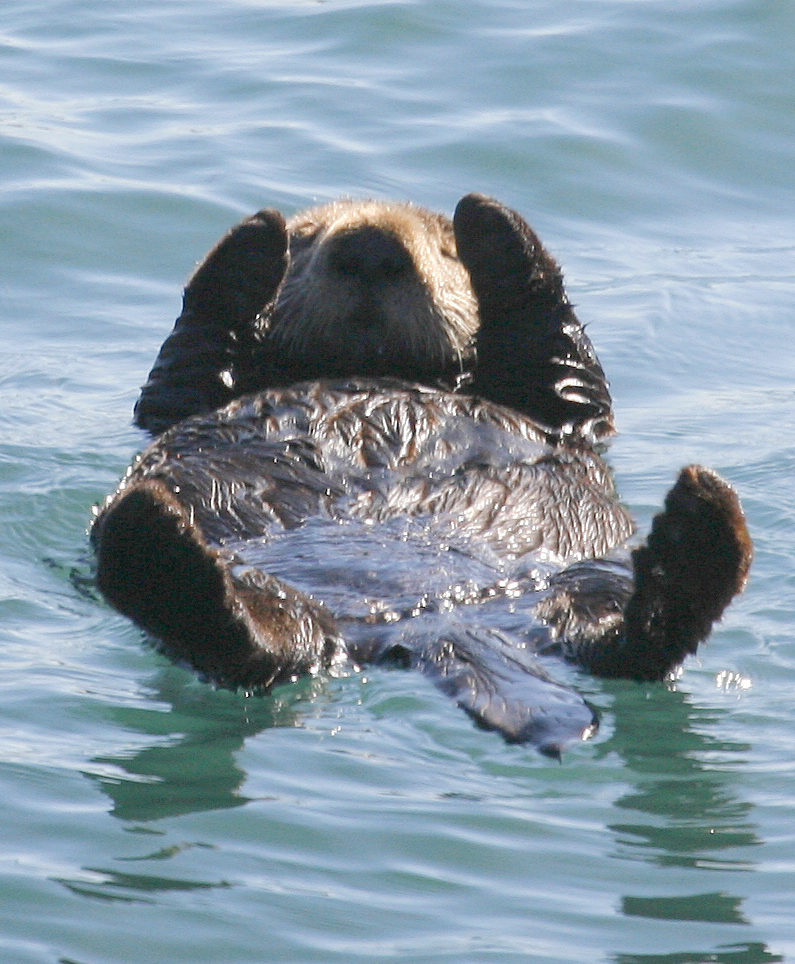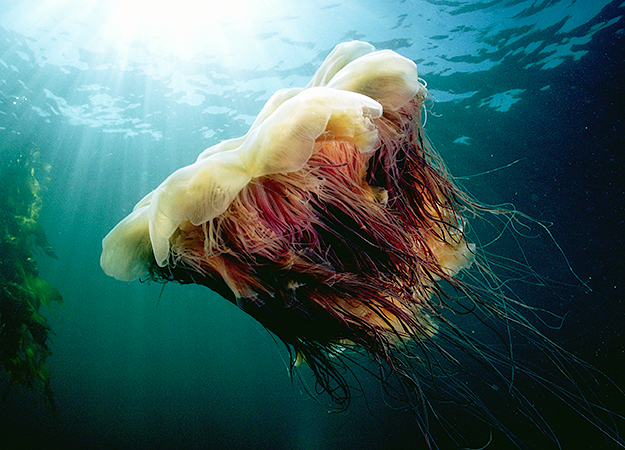
Big Blue Live is literally one of the best TV programmes EVER. I love animals and marine animals but there's just something amazing when you see a humpback whale majestically leaping out of the water. But tonight, they're trying to beat everything from the last few days with an encounter with one of the biggest marine animals - the blue whale. The whale weighs around 180 tonnes - absolutely HUGE!
Thursday night we saw how unique this period of time actually is - the water temperature averages about 16 degrees Celsius, around 3 degrees warmer than it should be (a lot warmer than the North Sea!) which means more animals than ever are flocking to the bay.
Scientists at the aquarium are amazed by the fact they're seeing animals that either never arrive at the bay or only see them every 10 or 20 years - if they're lucky. For example they've had an unprecedented number of crabs washing up on the beach and also caught sight of the Cooper Scollan.
 |
| The Great White Shark |
 |
| Relaxing Sea Otter |
They also had shark cam from a helicopter circling the bay, witnessing the incredible sights as the young sharks swim in the shallow waters close to the surface. Although I wouldn't like to be on the receiving end of an angry Great White Shark, apparently 1 adult great white shark weighs the equivalent of an American Football team! Thankfully 99% of Sharks are fine with humans and as they rightfully said we remove around 100 million sharks a year from our seas and we need to be fascinated by them rather than scared of them, that way we can appreciate them and then can thrive across the globe.

And of course the Sea Otters stole the show again (not that I'm complaining!), once more the whole of the British public wanted a pet sea otter as Matt Baker documented a Day in the Life of a Sea Otter. One of the cutest moments in their day, has to be when they take a mid afternoon nap - they actually hold hands to form a raft so that when they're sleeping they don't drift apart. Luckily, the Great White Shark prefer seals and other animals with a higher meat content rather than the sea otter.
 |
| Cute Baby Sea Lion |
As Liz jetted off around the corner of the bay we caught a close up glimpse of the many Sea Lions which have taken up residence on the bay. In fact, sea lions are one of our ocean's most dynamic predators and most intelligent too - they spend most of their day on constant look out for predators like the Great White Shark. Although even if they do end up on the wrong side of the shark they do stand a fairly good chance as an adult male can weigh as much as 60 stone! As well as being on the look out, they do also spend most of the day sunbathing in the heat of the midday sun, particularly this time of the year when the males aren't competing for females. Even when they are competing, an over aggressive male sea lion can easily put the female off.
Big Blue Live airs TONIGHT 7pm BBC1























